One Water: An Integrated and Adaptive Approach for Rural Wastewater Management in the People’s Republic of China
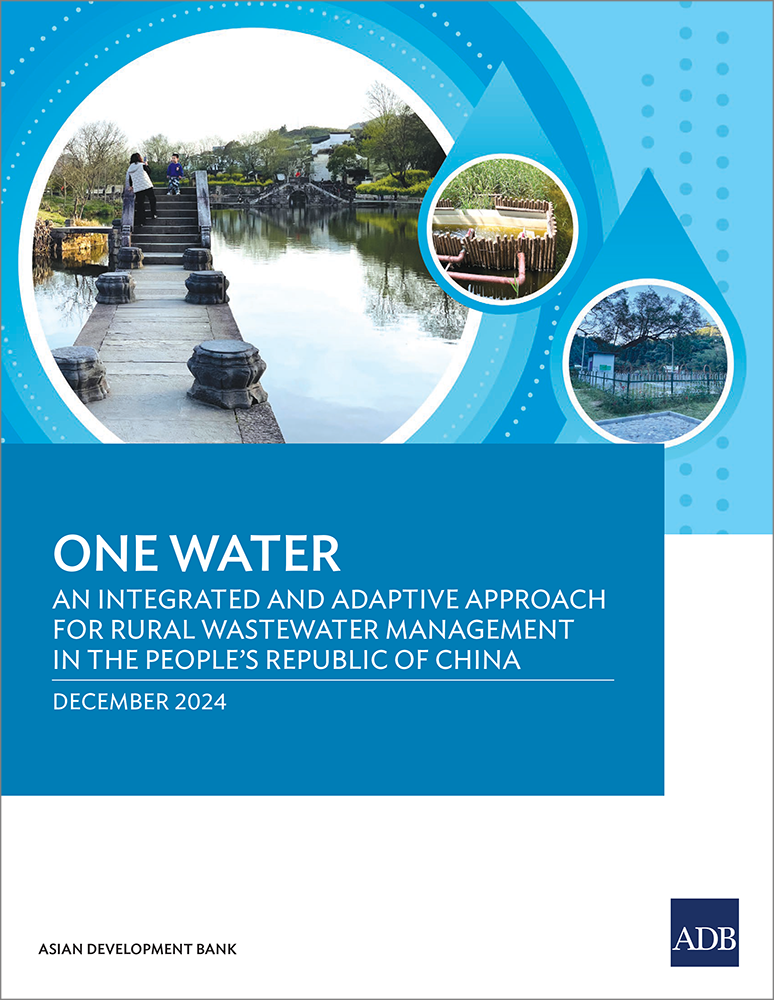

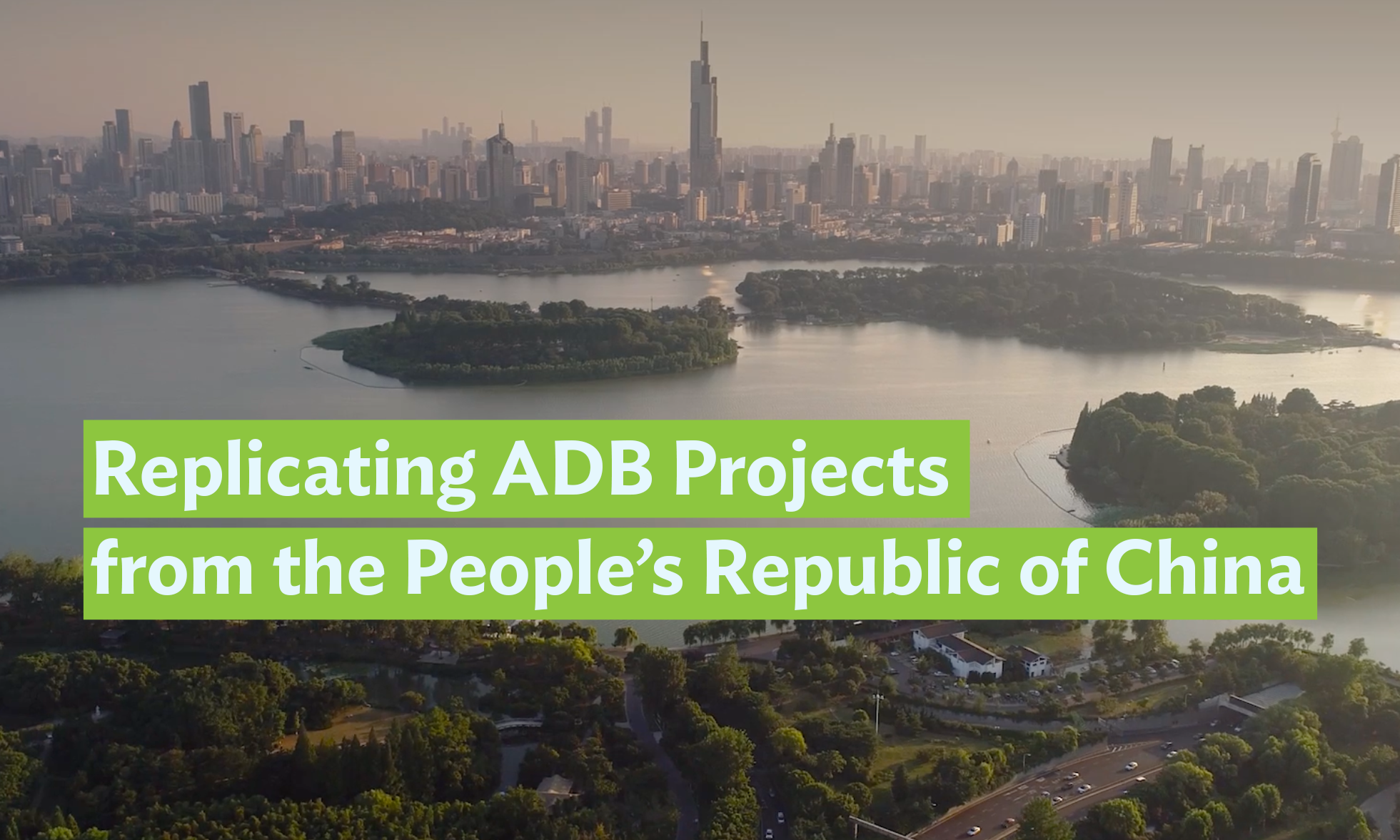
Generation of knowledge is a priority of the partnership between Asian Development Bank and the People’s Republic of China (PRC). The PRC’s rich experiences and its strong institutional and project implementation capacities make it fertile ground for learning, demonstration, and replication of new development approaches. A new publication, “Echoes of Success: Case Studies in the Replication of Asian Development Bank Projects in the People’s Republic of China,” looks at five projects in the PRC that illustrate how effective solutions to environmental and social problems have been replicated both within and outside the country. The sectors covered span nature conservation, green finance, road safety, renewable energy, and water resources management. The case studies highlight how lessons from projects in the PRC can help inspire and shape other projects in the PRC and beyond.
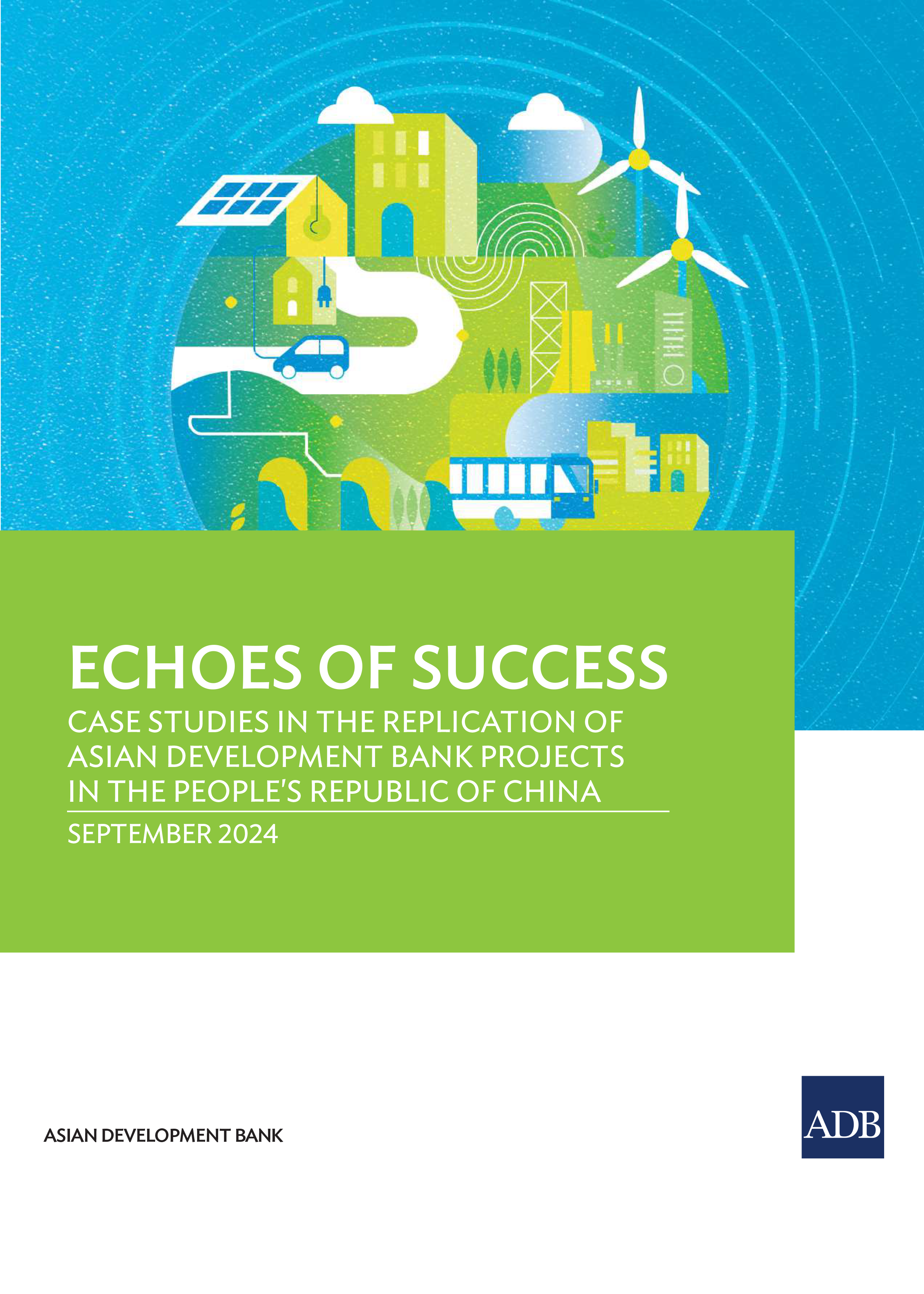
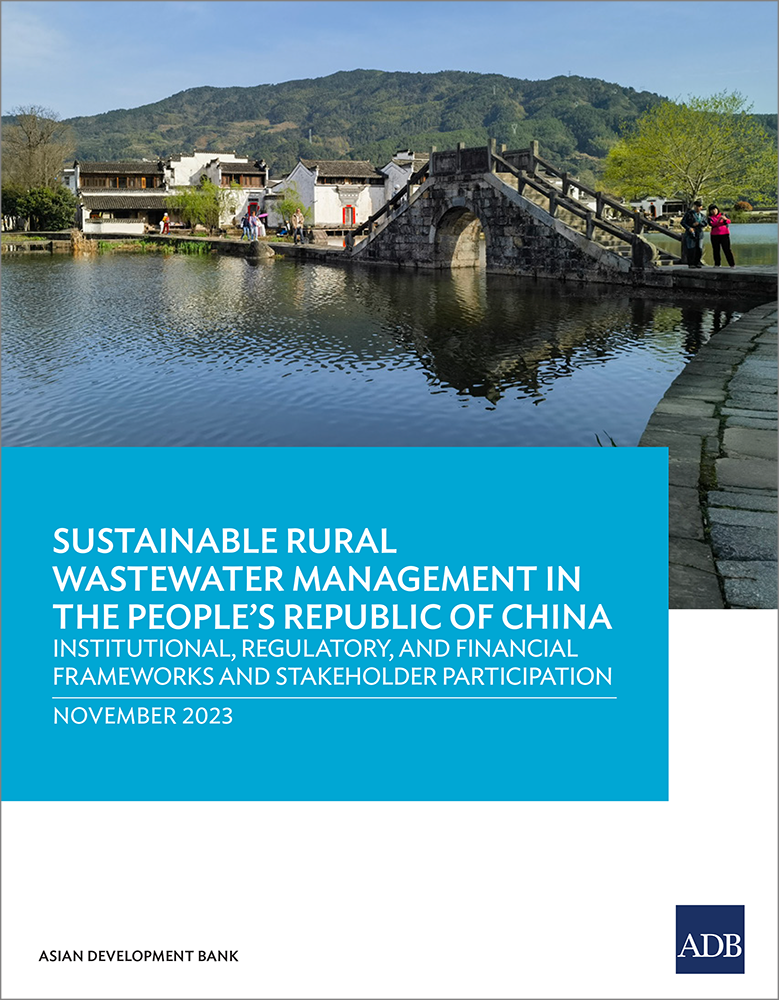
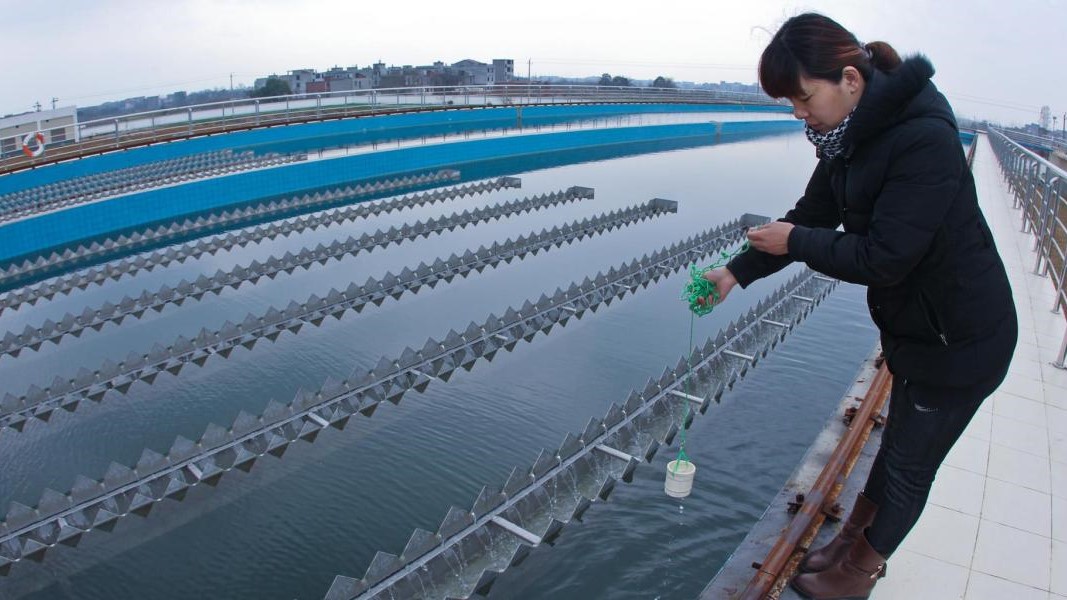

Water utilities in many cities in the People’s Republic of China may have achieved high level of cost recovery because of increased tariffs.
Introduction
Good tariff design is one of the key factors in enabling urban water and wastewater treatment systems to achieve full cost recovery and become financially independent. This requires in-depth tariff studies and financial and social analyses to inform policymaking, design tariff increases realistically, and gain public support for necessary reforms.
The experience of the People’s Republic of China (PRC) offers good practices in urban water and wastewater tariff reform for other countries in the region to consider. Since the late 1990s, the economic and enterprise reform programs of the PRC government required all water supply and wastewater management projects to be financially sustainable and capable of cost recovery. The Asian Development Bank (ADB) supported the government’s reform programs through water and wastewater tariff studies and helped finance water and sanitation projects to facilitate policy dialogue with the government and to assist water supply and wastewater treatment companies to achieve full cost recovery.
The Wuhan Wastewater and Stormwater Management Project, completed in 2015, demonstrates how cities can carry out water tariff reforms based on full cost recovery principles and considering local conditions. This article discusses in detail how a system approach to financial forecasting was used to determine a reasonable rate of return for the implementing agency, Wuhan Drainage Company (WDC), and to determine optimal tariff levels.
Three Water Tariff Studies
The preparation of the National Guidelines on Water Tariffs (NGWT) was a major output of the first of three water tariff studies funded by ADB. Promulgated by the National Development and Reform Commission (NDRC) and the Ministry of Construction (MOC) in September 1998, the NGWT reflects the following recommendations of the study: (i) selecting a tariff structure based on local conditions and priorities; (ii) adopting full cost recovery as the main objective in setting and approving tariff levels; (iii) using the public hearings mechanism to disseminate tariff increase plans to the public and obtain their feedback; and (iv) adopting a simplified process for tariff regulation, requiring evaluation and approval at the local municipal government level and supported by review and monitoring at the provincial and national level. The guidelines improved the long-term financial sustainability of the water supply companies and provided sufficient funds for operations and maintenance and service expansion, which would also help increase private sector participation in the water and wastewater sector.
Another water tariff study focused on assisting the government in developing institutional and technical capacities to implement the NGWT.
The PRC policy guidance on setting wastewater tariffs was amended in September 1999 by the government. It called for wastewater tariffs that are based on full cost recovery principles but allowed local governments the flexibility to decide when to adjust tariffs. Implemented between 2002 and 2003, ADB’s wastewater tariff study, the third study, contributed to this initiative to reform wastewater tariffs. The major output of the technical assistance was a detailed draft National Guidelines for Urban Wastewater Tariffs (NGWWT), including (i) Tariff Calculation Methodology, (iii) Model Agreement for Tariff Billing and Collection, (iv) Penalty and Administrative Remedies for Non-payment, and (v) Model Contract for Industrial Discharge to Sewer Network. MOC considered the recommendations in preparing the draft NGWWT to be approved by PRC State Council in 2005.
The Wuhan Project
Processed in 2005 and 2006, the wastewater and stormwater management project in Wuhan City entailed a total investment of $266.4 million, which included a $100 million loan from ADB. It was not a stand-alone investment but an integral part of the basin-wide Yangtze water resources management initiative, the Wuhan city urban development plan, the Wuhan municipal wastewater master plan, and the Wuhan stormwater drainage master plan. The Wuhan Municipal Government was implementing its wastewater master plan by installing additional wastewater treatment plants to achieve its target of 80% wastewater treatment rate by 2010.
In highlighting the project benefits, the Report and Recommendations of the President to the Board of Directors emphasized “improving cost recovery through a better tariff structure, with gradual increases to achieve cost recovery”, and “a demonstration impact on wastewater tariff reform in both the PRC and elsewhere in Asia.”
Historical tariffs. The tariff rates for water and wastewater (see Table 1) applied only to the seven central urban districts of Wuhan, and wastewater charges were based on actual water consumed. Wastewater tariff had not been introduced in suburban Caidian District, while 0.05 yuan/m3 wastewater tariff was levied on top of tap water sold in suburban Dongxihu District.
Table 1: Water and Wastewater Tariffs in Wuhan
| 1997 | 1998 | 1999 | 2000 | 2001 | 2002 | 2003 | 2004 | 2005 | |
|---|---|---|---|---|---|---|---|---|---|
| Wastewater tariff | |||||||||
| Resident | 0.160 | 0.176 | 0.192 | 0.208 | 0.400 | 0.400 | 0.800 | 0.800 | 0.800 |
| Public institutions | 0.160 | 0.176 | 0.192 | 0.208 | 0.400 | 0.400 | 0.800 | 0.800 | 0.800 |
| Industries | 0.160 | 0.176 | 0.192 | 0.208 | 0.400 | 0.400 | 0.800 | 0.800 | 0.800 |
| Operation and services businesses | 0.160 | 0.176 | 0.192 | 0.208 | 0.400 | 0.400 | 0.800 | 0.800 | 0.800 |
| Special industry | 0.160 | 0.176 | 0.192 | 0.208 | 0.400 | 0.400 | 0.800 | 0.800 | 0.800 |
| Water resources fee | |||||||||
| Resident | – | – | – | – | 0.010 | 0.010 | 0.010 | 0.010 | 0.010 |
| Public institutions | – | – | – | – | 0.010 | 0.010 | 0.010 | 0.010 | 0.010 |
| Industries | – | – | – | – | 0.020 | 0.020 | 0.020 | 0.020 | 0.020 |
| Operation and services businesses | – | – | – | – | 0.020 | 0.020 | 0.020 | 0.020 | 0.020 |
| Special industry | – | – | – | – | 0.020 | 0.020 | 0.020 | 0.020 | 0.020 |
| Tap water tariff | |||||||||
| Resident | 0.450 | 0.450 | 0.620 | 0.620 | 0.700 | 0.700 | 0.700 | 0.700 | 0.700 |
| Public institutions | 0.690 | 0.690 | 0.800 | 0.800 | 0.800 | 0.800 | 0.800 | ||
| Industries | 0.600 | 0.600 | 0.880 | 0.880 | 1.000 | 1.000 | 1.000 | 1.000 | 1.000 |
| Operation and services businesses | 1.000 | 1.000 | 1.460 | 1.460 | 1.700 | 1.700 | 1.700 | 1.700 | 1.700 |
| Special industry | 1.660 | 1.660 | 1.900 | 1.900 | 1.900 | 1.900 | 1.900 | ||
| End user combined tariff | |||||||||
| Resident | 0.610 | 0.626 | 0.812 | 0.828 | 1.110 | 1.110 | 1.510 | 1.510 | 1.510 |
| Public institutions | 0.882 | 0.898 | 1.210 | 1.210 | 1.610 | 1.610 | 1.610 | ||
| Industries | 0.760 | 0.776 | 1.072 | 1.088 | 1.420 | 1.420 | 1.820 | 1.820 | 1.820 |
| Operation and services businesses | 1.160 | 1.176 | 1.652 | 1.668 | 2.120 | 2.120 | 2.520 | 2.520 | 2.520 |
| Special industry | 0.160 | 0.176 | 1.852 | 1.868 | 2.320 | 2.320 | 2.720 | 2.720 | 2.720 |
Wuhan introduced a low wastewater tariff in 1997 and increased the tariff thereafter. When wastewater tariff was increased in 2003, the municipal government requested special subsidies for urban poor households recorded by the Wuhan Social Affairs Bureau.
The wastewater tariff of 0.80 yuan/m3 in Wuhan was relatively higher than many cities in the PRC as shown in Figure 1. Return on equity (ROE) for the WDC stood at 21.4%, 26.2%, and 19.7% from 2003 to 2005 respectively, showing full cost recovery achieved with the increased tariff at 0.80 yuan/m3. Many cities charged different wastewater tariffs for different water user categories. It appears a certain level of cost recovery, including full cost recovery for some cities and high-level cost recovery for other cities, would have been achieved among many cities in 2005 based on their tariff levels.
Figure 1: Resident Wastewater Tariff in Some Cities in 2005
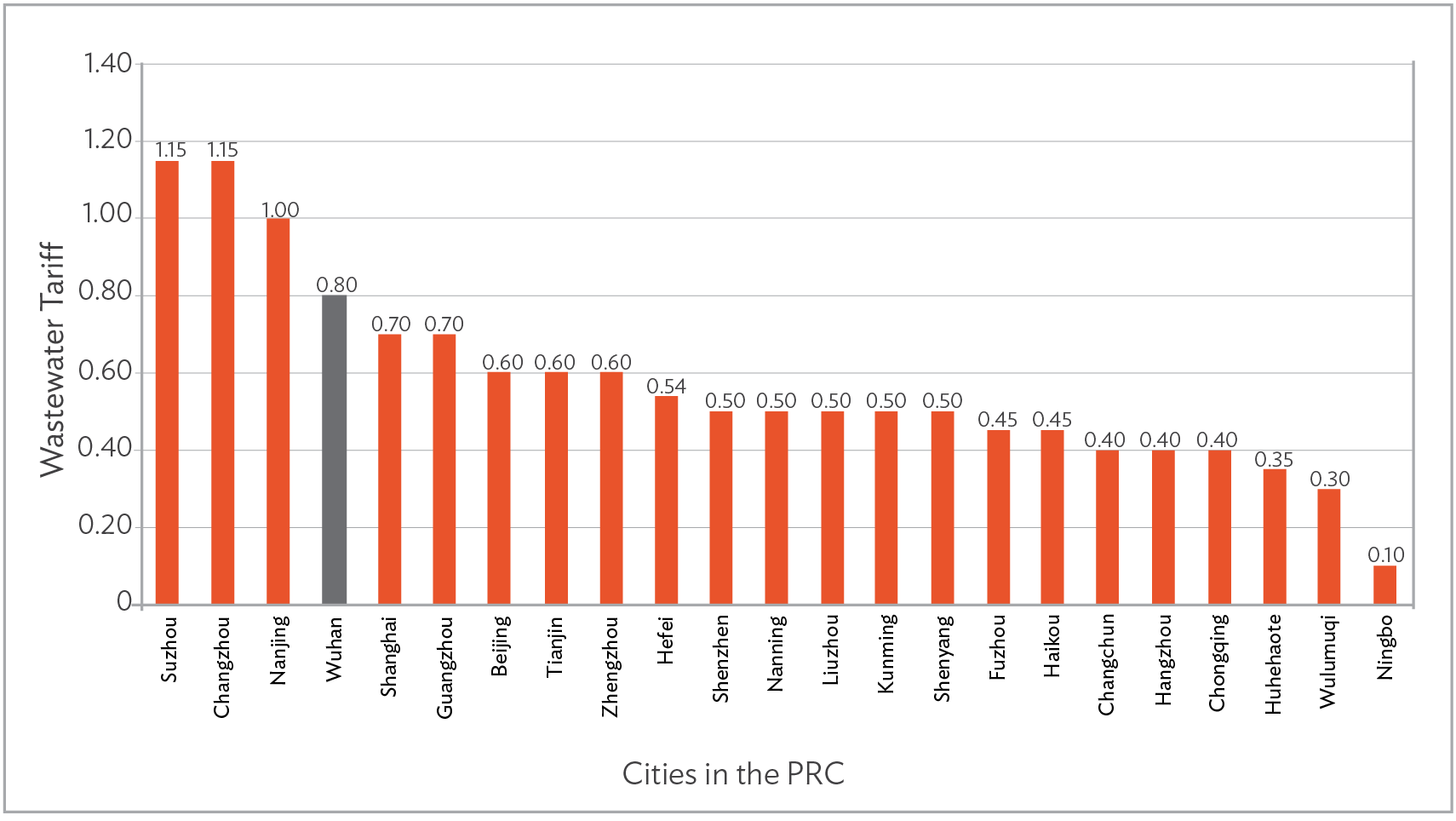
Methodologies. For each of the five wastewater treatment plants for the project, a financial cost–benefit analysis was conducted in real terms to determine weighted average cost of capital (WACC), financial internal rate of return (FIRR), and other indicators to assess financial viability of each plant (or subproject) and the incremental tariff required. For the three wastewater treatment plants in the central urban area, the incremental wastewater tariff assumed in the financial cost–benefit analysis was added to the existing wastewater tariff of 0.80 yuan/m3 in Wuhan, which will be levied on top of the water sold in the central urban areas, to arrive at the projected total wastewater tariff revenues for the implementing agency. For the two suburban wastewater treatment plants in Dongxihu and Caidian, which have different and much lower tariffs, the same financial cost–benefit analyses were conducted.
The wastewater tariffs in real terms used in the financial cost–benefit analysis for each of the five wastewater treatment plants were converted into nominal terms, and pro forma financial statements for each plant were separately prepared, projected, and analyzed.
Historical financial statements of WDC, the implementing agency for five wastewater subprojects, were analyzed, and projections were made. Financial statement projections, including income statement, balance sheet, and cash flow statement, were prepared in nominal price terms for a scenario without the project, taking into account major capital expenditures, associated operation and maintenance (O&M) costs, and other related costs and arrangements. Pro forma financial statement projections for the five wastewater treatment plants were consolidated into the financial statement projections for WDC for a scenario with the project.
The financial statement projections for WDC were prepared in nominal price terms and included inflation-adjusted costs and revenues for each year from 2006 to 2018. The consolidated financial statement projections were made to forecast the financial performance of the implementing agency, to assess profitability and debt service ability, and to test the tariff required for WDC to raise funds for project construction and achieve full cost recovery during operation.
Each wastewater treatment plant, or subproject, would normally require relatively higher incremental tariff, and different wastewater treatment plants would demand different tariff increases. All these needed to be tested in the whole system through the financial statement projections for WDC with due consideration to the tariff practice in Wuhan. Return on equity for WDC, based on the proposed tariff increase, would range from 6.0% to 21.4% during the project implementation until 2010 and from 4.3% to 7.5% when the project was operational from 2011 to 2018.
Further assessments and policy dialogue. The tariff arrived from the above analyses still cannot fully justify a proposed tariff increasing plan. Further assessments were needed, such as on customers’ willingness to pay the higher tariff and an affordability analysis. Pro-poor arrangements for urban poor households needed to be in place as well as measures to draw feedback on the planned increase and build public support for it.
Nonrevenue water (NRW), both technical loss and nontechnical loss, are important factors impacting the implementing agency’s financial performance. Reduced NRW due to improved engineering and tariff revenue collection had been assessed and incorporated into the financial cost–benefit analysis and the WDC’s financial statement projections.
For the Wuhan project, policy dialogue with government was proposed to support a realistic tariff reform program. Based on the analyses and assessments, it was recommended that wastewater tariff be increased in 6 years to 1.00 yuan/m3 from the current 0.80 yuan/m3.
Improved public awareness of the benefits accruing from effective drainage and treatment of wastewater significantly enhanced users’ willingness to pay wastewater charges. Socio-economic surveys undertaken during the loan processing indicated a significantly higher level of public willingness to pay, a positive indicator of public support for the project.
The tariff levels based on the principles of full cost recovery would enable WDC to become a financially autonomous and sustainable entity, and the availability of adequate funds for loan repayment, operations and maintenance, and eventual replacement of project facilities would be assured.
Findings in Project Completion Report by August 2015. The Wuhan Municipal Government held a public hearing on the tariff increase. Delayed by 2 years, the wastewater tariff was increased to 1.1 yuan/m3 in 2014 for urban residents, higher than suggested by ADB. The WDC complied with all financial covenants, which includes that “wastewater tariffs charged by WDC be set at a level that ensures cost recovery of operation and maintenance, depreciation and financial costs including the debt service obligations, and a reasonable profit margin for WDC.” The project is rated likely sustainable. Although there was delayed implementation for 1 WWTP, “the urban wastewater treatment rate in Wuhan reached 92.4% in 2010 and 93% in 2013.”
Current Water Tariff in Wuhan and Wastewater Tariff among Cities. The current water tariff in Wuhan is presented in Table 2.
Table 2: Water and Wastewater Tariff in Wuhan
(yuan/m3)
| Water | Wastewater | Combined | |
|---|---|---|---|
| Resident | 1.37 | 1.10 | 2.47 |
| Nonresident | 2.12 | 1.37 | 3.49 |
| Special industries | 8.10 | 1.37 | 9.47 |
Figure 2: Current Resident Wastewater Tariff in Some Cities
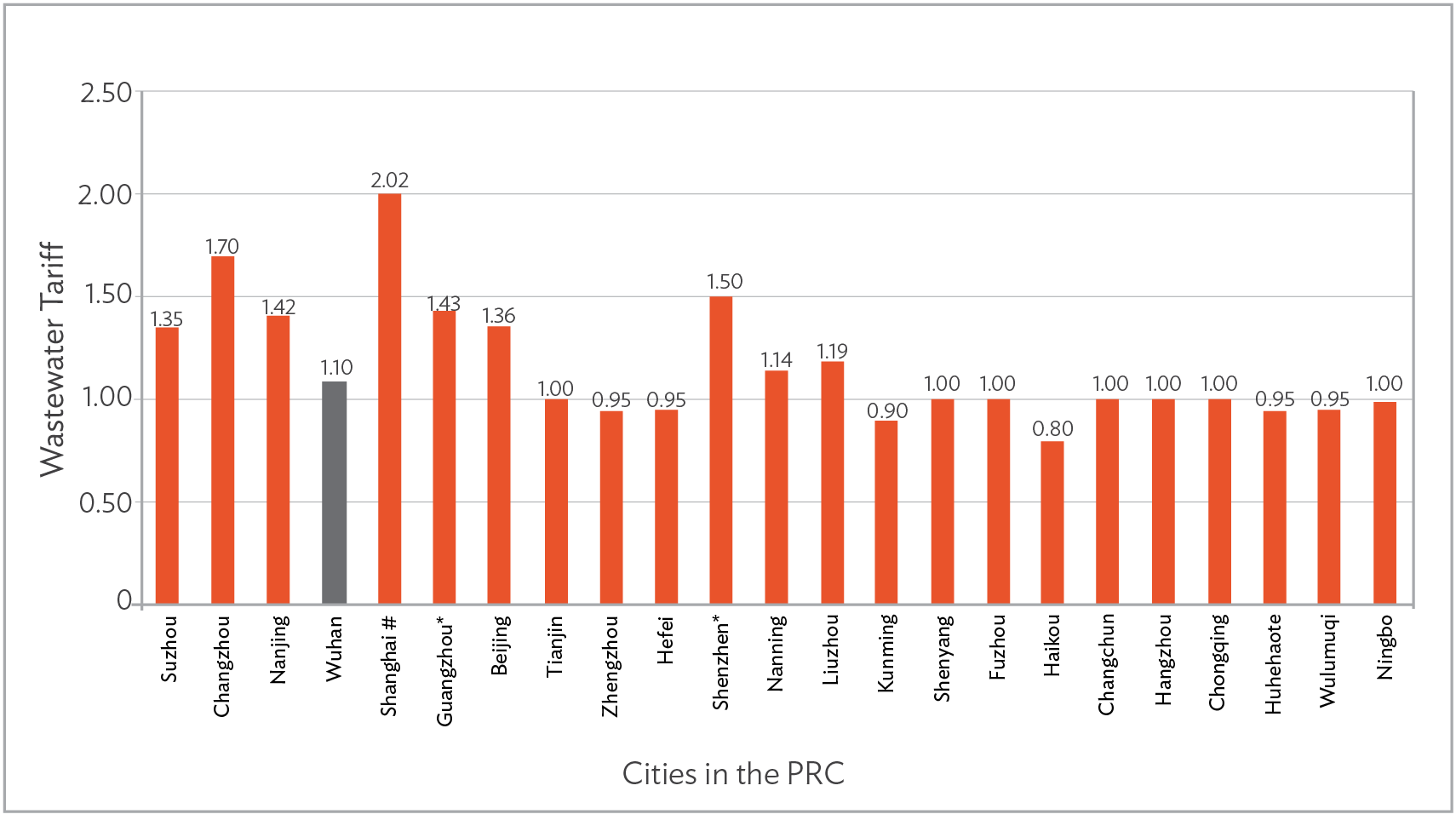
ADB’s first two water tariff studies were conducted when the gross domestic product (GDP) per capita in the PRC was at a low $609.66 in 1995 and $959.37 in 2000. This did not deter initiatives to reform the water and wastewater tariffs in the country with the objective of requiring full cost recovery from service providers. Figure 1 shows a high level of cost recovery would have been achieved in many cities because of increased wastewater tariffs when per capita GDP was about $1,753.42 in 2005. Figure 2 shows a high level of cost recovery, including full cost recovery for some cities, would have been achieved now among the cities.
In comparison, when per capita GDP in the Philippines was $1,741.60 in 2007 (Table 3 below), the combined water and wastewater tariff in Bonifacio Global City and Metro Manila was so high that full cost recovery should have already been achieved then. The Manila Water Company, Inc. provides water treatment, water distribution, sewerage, and sanitation services to more than six million people in the eastern side of Metro Manila (East Zone), which comprises a broad range of residential, semi-business, commercial. and industrial customers. The East Zone encompasses 23 cities and municipalities, spanning a 1,400-square kilometer area. The company is entitled to recover its operating, capital maintenance, and investment expenditures; business taxes; and concession fee payments over the concession period; and to earn a rate of return on these expenditures. Its return on equity from 2006 to 2020 ranged from 8.09% to 22.4%.
Table 3: GDP per Capita in Current Prices
(US$)
| 1995 | 2000 | 2005 | 2007 | 2010 | 2015 | 2020 | 2021 | |
|---|---|---|---|---|---|---|---|---|
| People’s Republic of China | 609.66 | 959.37 | 1,753.42 | 2,693.97 | 4,550.45 | 8,016.43 | 10,408.67 | 12,556.33 |
| Philippines | 1,222.29 | 1,073.26 | 1,245.29 | 1,741.60 | 2,201.78 | 2,974.30 | 3,224.42 | 3,460.53 |
Source: The World Bank.
Most water supply companies in the PRC are owned by the government. The Manila Water Company, a publicly listed company, is the concessionaire of the state-run Metropolitan Waterworks and Sewerage System. WDC and Manila Water Company achieved full cost recovery when per capita GDP was about $1,750 in the two countries.
Today, per capita GDP in most of developing Asia is around $1,750 or higher. Some countries even have a per capita GDP that is higher than $10,000. Yet, many water systems in the region are not financially sustainable and rely heavily on fiscal transfers and government subsidies despite improved economic well-being. Most water and sanitation projects are still justified based on their capacity to generate revenue to adequately cover O&M costs, and the government’s commitment to transfer adequate funds as necessary to cover such expenses.
With relatively higher inflation rates over the years, no increase in tariff in nominal terms means decreased tariff in real terms, further deteriorating the financial position of a water utility. This means the water utility will continue making demands on government’s scarce fiscal resources. It has no financial capacity for assets expansion or replacement to provide better services to the public.
Increased per capita GDP in a country normally improves the affordability profile, especially in its capital and major cities with relatively higher per capita GDP. When higher tariffs are affordable in a city, public support, willingness-to-pay, and pro-poor arrangement for poor households are sensitive and critical concerns before a water system can be moved up to a higher level of cost recovery. Continued policy dialogue with governments supported by a realistic tariff study and in-depth financial and social analyses, together with good practices in the water sector, would help build understanding and a better future for people and for countries.
Asian Development Bank (ADB). Wuhan Wastewater and Stormwater Management in the People’s Republic of China.

Former Senior Financial Management Specialist, Procurement, Portfolio and Financial Management Department, ADB
This blog is reproduced from Development Asia.
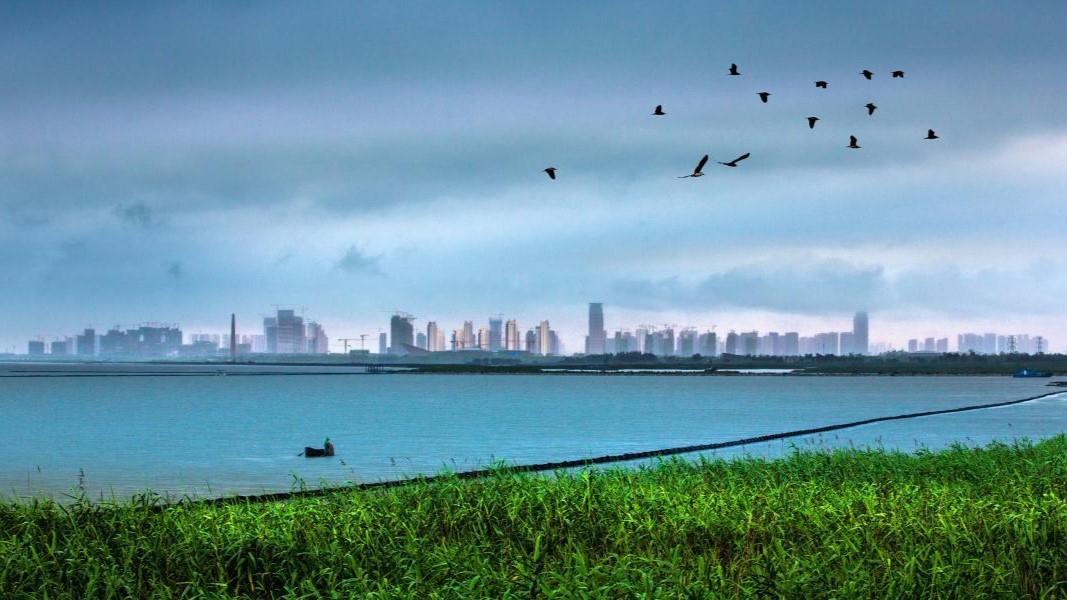
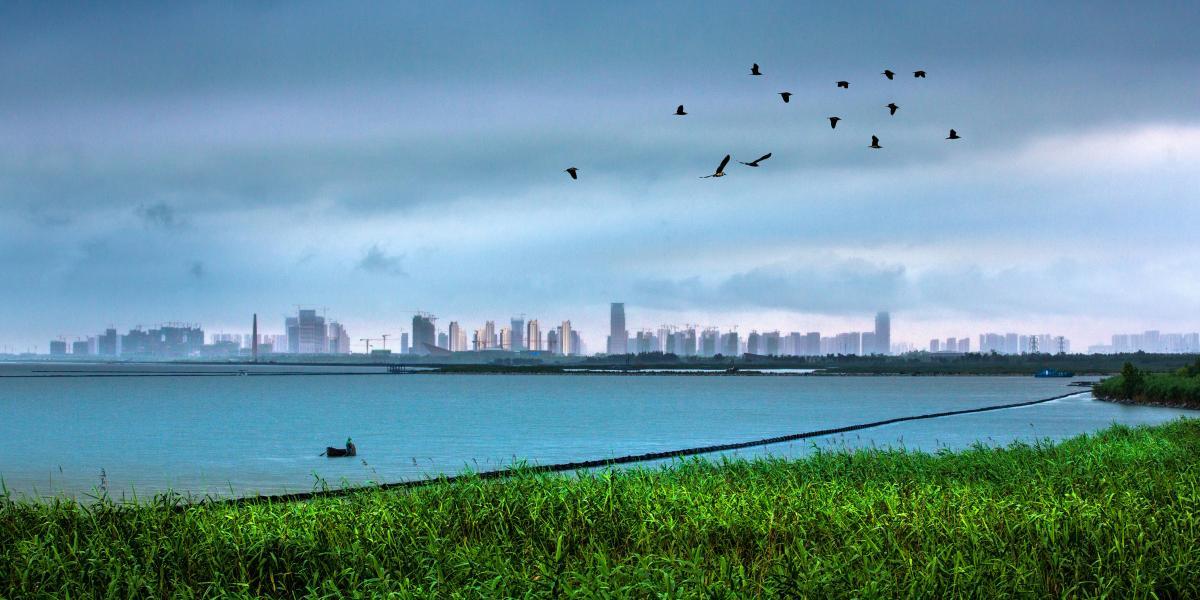
Strengthening the capacity of the new lake authority was a critical success factor in implementing an integrated lake basin management project.
Overview
The area around Chao Lake, the fifth-largest freshwater lake in the People’s Republic of China (PRC), has experienced tremendous economic growth from 2000 to 2009. This has resulted in a 30% increase in the urban population within the lake basin catchment and a fivefold increase in gross domestic product (GDP). However, this remarkable progress came at an environmental cost. In 2010, the lake’s overall water quality was considered Class V, the worst grade under the PRC’s national environmental water quality standard.[1]
To decouple economic growth from environmental degradation, the Anhui Provincial Government crafted the Master Plan for Integrated Water Environmental Management of Chao Lake Basin (2008–2020). This unprecedented plan set forth a basic framework aimed at enhancing the water quality of Chao Lake while safeguarding its economic, ecological, and aesthetic values by adopting the integrated water resources management approach.
The Asian Development Bank (ADB) was invited by the Anhui Provincial Government in 2010 to support the implementation of this master plan through its lending program. The Anhui Chao Lake Environmental Rehabilitation Project put a great emphasis on institutional capacity building to support the then newly established Chao Lake Management Authority that has primary authority and responsibility for managing the lake. It is the first lake or river management agency in the PRC that has a sufficiently comprehensive management purview and the first to deal with all aspects of the water cycle.[2] The project also made significant engineering investments toward controlling nonindustrial municipal point source pollution and nonpoint source pollution.
With the help of the Anhui Chao Lake Environmental Rehabilitation Project, the lake’s water quality began to show signs of recovery. By 2021, the lake’s water quality improved to Class IV,[3] while the basin economy experienced increased GDP at an estimated 11% compound annual growth rate.
The project offers valuable insights on supporting new river basin authorities for integrated water resources management and offers replicable lessons and best practices that other regions within and beyond the PRC could benefit from.
Project information
44036-013 : Anhui Chao Lake Environmental Rehabilitation Project in the People’s Republic of China
Project snapshot
Context
The Chao Lake basin covers 13,545 square kilometers or about 10% of the total area of Anhui province, with some 40 tributaries belonging to seven major river systems flowing into it. The lake serves as a crucial component of the province’s industrial and agricultural water supply, water transport, tourism, and recreational activities. The population in the basin totaled about 11.9 million in 2020.
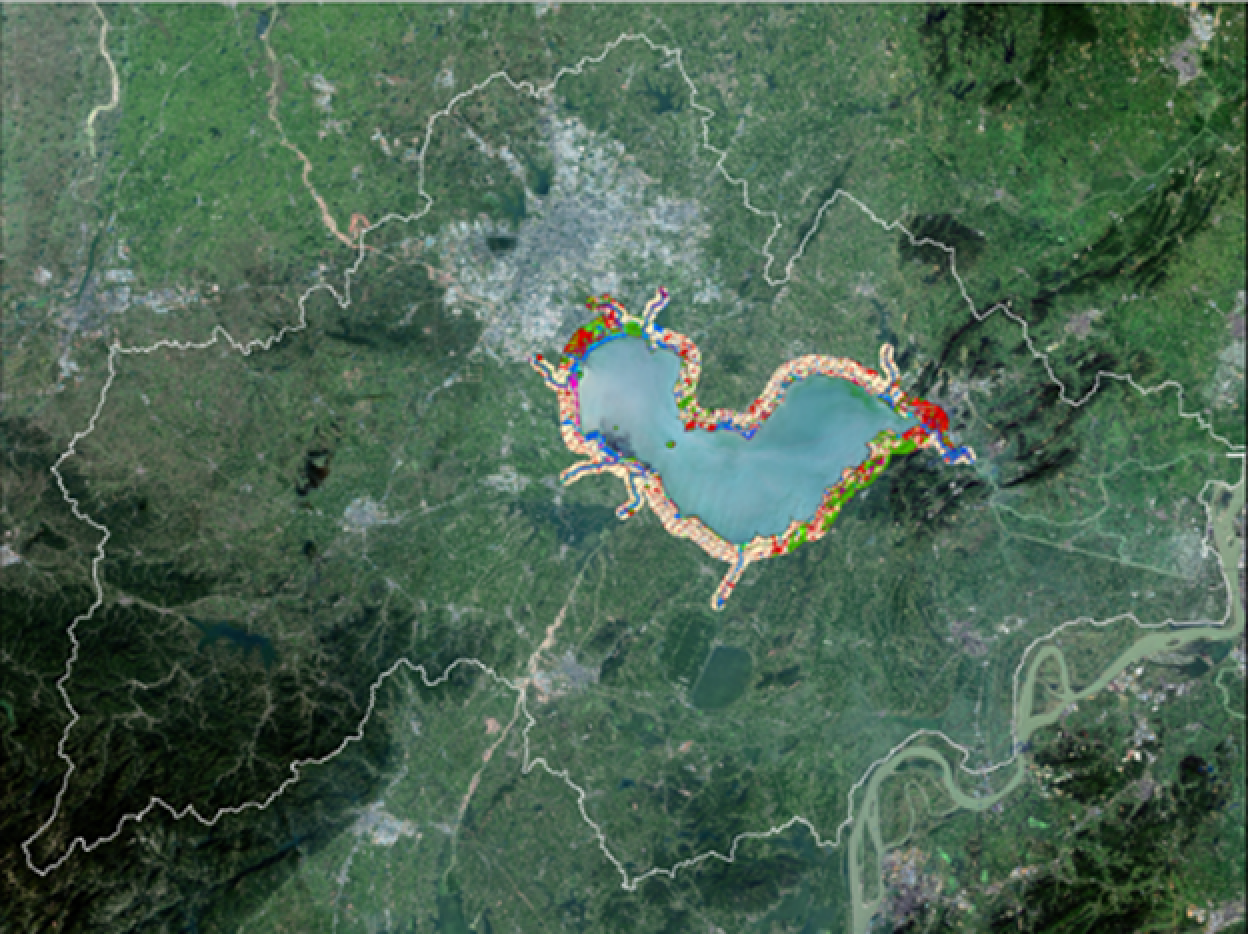
The lake’s water environment has suffered significantly because of the adverse effects of rapid economic growth and urban development since 1990. Recognizing its poor water quality, the national government designated it as one of three priority lakes for environmental rehabilitation in 1996.
Despite substantial resources being invested in controlling pollution within the lake basin and industrial pollution being largely under control by 2010, Chao Lake continued to be besieged by excessive amounts of organic matter, nitrogen, and phosphorous, which contributed to it retaining a Class V water quality status in 2010.
Challenge
Back then, the primary pollutant sources in the Chao Lake were nonindustrial municipal point source pollution. The sewerage system coverage and wastewater treatment capacity in the urban area were woefully inadequate, leading to a considerable amount of untreated domestic wastewater in towns being discharged into water bodies.
The nonpoint source pollution was also significant and largely to be addressed, including waste from animal farming, nitrogen and phosphorous runoff from farmers’ fields, unsewered rural households, resuspension of polluted sediments, and erosion of riverbanks during high flow conditions.
Pressures from economic growth and urban development were expected to continue, if not increase, based on strategic plans for the Chao Lake basin. The Anhui Provincial Government and the Ministry of Environmental Protection signed a cooperation agreement to manage the environmental implications of these developments, but concerns for increased water pollution remained.
In 2011, the Anhui Provincial Government established the Chao Lake Management Authority as one of the PRC’s pioneering agencies tasked with overseeing all aspects of lake water quality and use. However, the agency faced challenges related to acquiring necessary knowledge and skills on integrated lake basin management due to limited precedents in the PRC to learn from and staff inexperience. It also needed to gain the cooperation of different sectors and agencies to effectively coordinate efforts related to lake rehabilitation.
Solutions
In 2012, ADB approved a $250 million loan aimed at enhancing the water resources and environment in Chao Lake and its upstream rivers. The project sought to improve residents’ quality of life and ensure sustainability of the aquatic ecosystem within the lake basin. To achieve these goals, the project expanded and enhanced municipal wastewater treatment, made new investments in nonpoint source pollution control, and bolstered the institutional capacity of Chao Lake Management Authority through an integrated approach.
Capacity building included organizing training programs and study tours for staff, delivering a UNESCO–Institute for Water Education (IHE) capacity-building program, financing water quality monitoring equipment, and providing consulting services. The consulting services supported research on an integrated management mechanism for Chao Lake basin based on function zoning, blue-green algae early warning system development based on a water quality-water turbulence model, and water environment intelligent supervision and spatial data management system development.
The project constructed wastewater collection systems in developed urban areas where the wastewater was unsewered and untreated, and intercepted sewer discharges flowed directly into tributaries of Chao Lake. A total of 640 kilometers (km) of the sewer network and 15 wastewater pumping stations were constructed, expanding the capacity of the wastewater collection system by 540,400 cubic meters (m3) per day. The project also built 10 wastewater treatment plants with 176,000 m3/day treatment capacity.
The project dredged 112 km of river course to remove nutrient-rich sediments from the beds of rivers flowing into Chao Lake to prevent excessive plant and algal growth; built 160 km of embankment to reduce soil erosion and enhance the flood protection of adjoining lands; and implemented a solid waste collection and transfer subproject to control a troublesome source of floating objects. It also established 430 hectares (ha) of lakeside and riverine wetlands to reduce nutrient loads going into the lake, enhance habitats for wildlife, and absorb the wind-induced waves that break down the banks. It piloted nonpoint source pollution control in rural areas, focusing on agricultural pollution sources.
As part of nonpoint source pollution control measures, 20 training sessions were conducted in rural communities for technology-extension workers and local farmers on such topics as organic agriculture and certification of organic produce, nonpoint source pollution control technology, principle and method for fertilizer selection and application, green control of pest and diseases, and rice and shrimp co-cropping.
In total, 14 training programs and 14 study tours were organized for Chao Lake Management Authority staff. Capacity building activities covered river basin management and integrated water resources management, eco-compensation, innovative mechanisms on pollution control, regulation formulation and enforcement, ecological restoration and security, nonpoint source pollution control, water quality and hydrodynamics modeling, remote sensing and environmental monitoring, environmental impact assessment, and project management.
In addition, a UNESCO–IHE (Institute for Water Education) capacity building program supported the project through the following activities:
Three consulting services packages for study and system development works were also implemented.
Results
Through the sewer network and wastewater treatment plant component, the chemical oxygen demand discharge was reduced by 22,313 tons per year, the ammonia nitrogen discharge by 3,142 tons per year, and the phosphorus discharge by 413 tons per year. Dredging activities removed about 2,506 tons of total nitrogen and 919 tons of total phosphorus from the Chao Lake and its tributaries. Constructed wetlands of 430 ha also helped remove about 15 tons of total phosphorus, 71 tons of chemical oxygen demand, and 36 tons of ammonia nitrogen each year.
Overall, the project benefited approximately 2.54 million people, of whom 49.1% are women and 8.2% from low-income households. Benefits included an improved living environment and better access to water resources. About 1,000 agricultural technology-extension workers and local farmers participated in training sessions on agricultural nonpoint source pollution reduction and environmentally friendly agriculture.
With the project assistance, the Chao Lake Management Authority established its authority and enhanced its capacity for managing the lake basin. Its human resources attained the staff skills needed to achieve its objectives. An information system and monitoring facility was established and has been issuing an annual monitoring report on the ecological health of the lake since 2017.
The government expanded the Chao Lake Management Authority’s original mandate and entrusted it with a greater role in lake basin management. This enhanced the institution’s sustainability as well as demonstrated the strong commitment of the Anhui Provincial Government to integrated water resources management in the lake basin.
The overall water quality in Chao Lake was restored to Class IV in 2021 from Class V in 2010. The water quality of the eight upstream rivers flowing into the Chao Lake with national control sections also largely improved. In 2021, the annual water quality assessment of the national control sections of the lake basin fully reached the required standard. Since 2021, the endangered Ciconia boyciana (Oriental Stork) and Emberiza aureola (Yellow-breasted Bunting) have become frequent visitors to the lake because of the improved aquatic ecosystem. This improvement occurred alongside significant economic growth in the region, with the GDP of the Chao Lake basin increasing from CNY70 million (about $9.7 million) in 2017 to CNY108 million (about $15 million) in 2021, representing an approximate 11% compound annual increase.
Lessons
Institutional capacity. The creation of a primary institution to manage the lake was important for integrated river basin management. However, turning a good concept into reality took time and required an evolutionary process. At the beginning, the Chao Lake Management Authority struggled to establish its authority and distinguish its responsibilities from related provincial line departments. Persistent efforts enabled the agency’s transformation into an established and recognized lake basin management institution over the past 10 years.
Strengthening its institutional capacity was a critical success factor. The project gave timely support to the Chao Lake Management Authority by improving its technical capacity, providing advanced monitoring facilities, developing a lake management information system, addressing key management issues, and connecting it to international networks.
Effective incentive mechanism. Reducing the agricultural nonpoint source pollution remains to be a challenge in the Chao Lake basin. Since household farming was the major source of livelihood for many years, the increasing labor cost and low environmental literacy of local communities hindered the transition to environmentally friendly agriculture. While an eco-compensation program can provide incentives to farmers, the absence of a cost-effective measure to quantify the pollution emission from a household’s farmland impeded the wide application of an effectiveness-based quantitative incentive mechanism. The increased land circulation for crop farming in recent years offers new opportunity for this endeavor.
Digital governance. Data accessibility and integration are often an issue in the digital governance of a lake basin. The data are usually collected and held by different line departments, such as those on environmental protection, agriculture, land resources, and water resources. The Chao Lake Management Authority successfully addressed this concern by initiating a monitoring system reform to integrate the monitoring data sets for the lake basin. This involved unifying planning, design, indicator system, inspection, software management, and data platforms while allowing different departments to install, operate, and manage the monitoring facilities separately.
[1] According to the PRC Environmental Water Quality Standard GB3838-2002, Class III water is suitable as a supply source for a municipal drinking water treatment plant and for swimming. Class IV water is suitable for use as a general industrial water supply and for recreational use involving no direct human contact with the water. Class V water is suitable only for agricultural water supply and general landscaping use. Class V+ water is unsuitable for any use.
[2] Q. F. Zhang and M. Bennett. 2011. Eco-compensation for Watershed Services in the People’s Republic of China. Manila: Asian Development Bank.
[3] See footnote 1.
Asian Development Bank (ADB). 2022. Completion Report: Anhui Chao Lake Environmental Rehabilitation Project in the People’s Republic of China. Manila.
ADB. People’s Republic of China: Anhui Chao Lake Environmental Rehabilitation Project.
ADB. 2016. People’s Republic of China: Saving the Great Lakes. Project Result/Case Study. 02 March.
ADB. 2015. Reviving Lakes and Wetlands in the People’s Republic of China, Volume 2. Manila.

Senior Project Officer (Natural Resources and Agriculture), East Asia Department, ADB
This blog is reproduced from Development Asia.
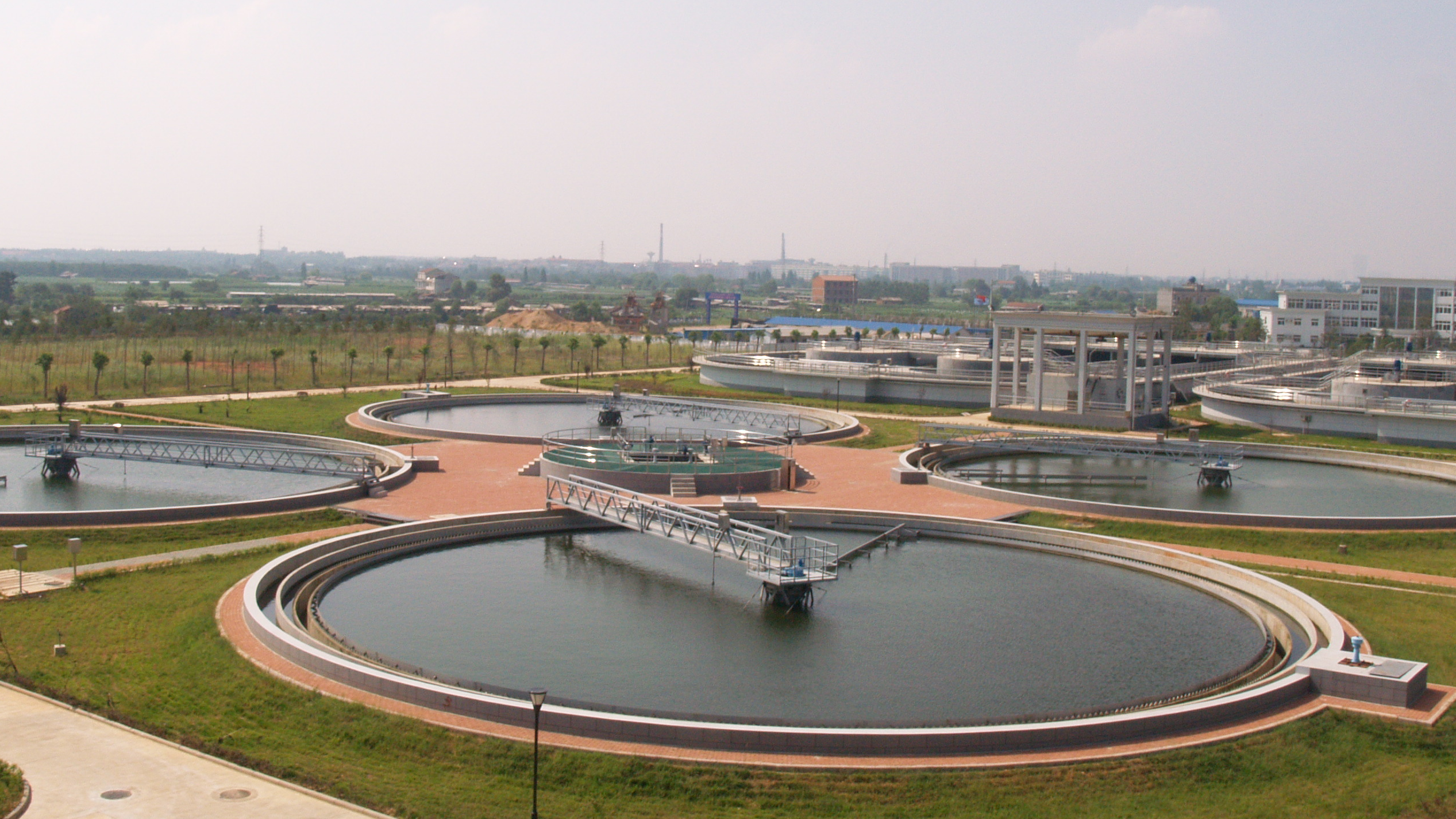
The video showcases three ADB projects that focus on urban environmental improvements in, among others, managing wastewater, sludge treatment, and lake rehabilitation. The success of the Wuhan project was later replicated in other cities in Huangshi and Huainan.
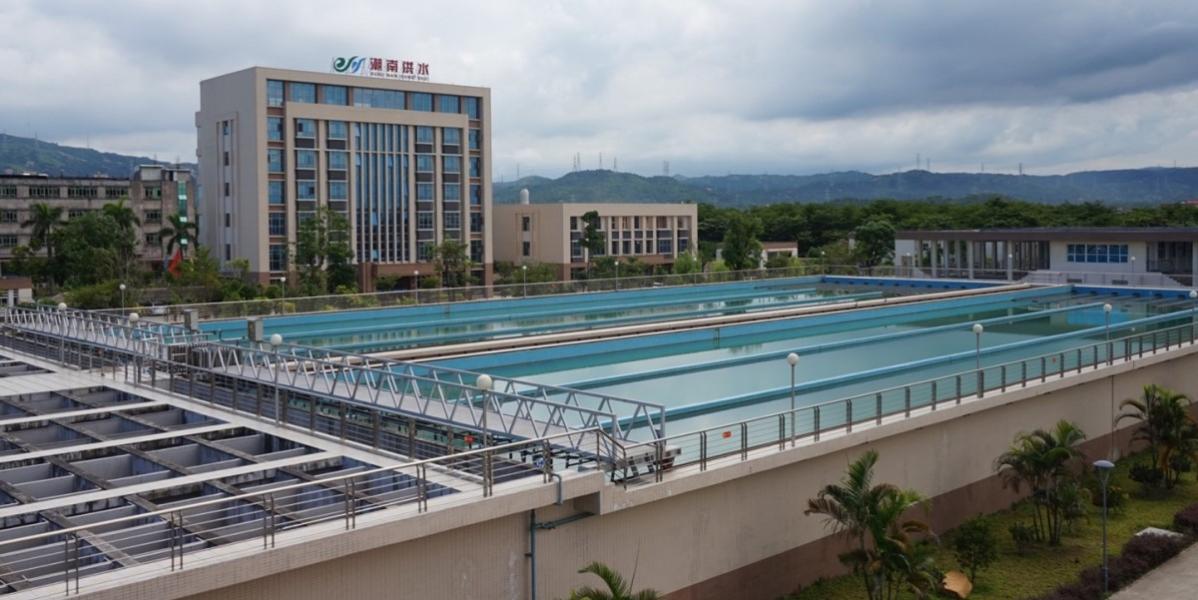

A project in Chaonan district in the PRC shows how to improve services in rural areas and small towns with scarce water resources.
Overview
Residents of Chaonan district in the People’s Republic of China (PRC) were suffering from absolute water scarcity. During the dry season, some areas had no water supply at all. Water was supplied mainly to residents of towns and rural households close to these towns. The lack of water affected the district’s economic development and people’s health and quality of life.
A project supported by the Asian Development Bank (ADB) has provided safe, reliable and equitable water supply to both urban and rural residents. It improved water supply by strengthening water resources management, upgrading the water supply infrastructure, and supporting institutional reform and staff capacity building.
The project helped integrate independent water systems under one water utility and improved the company’s performance. It improved water services in rural areas, reduced water tariff by 40%, resolved health problems due to the high fluoride content in the groundwater, and relieved women of the burden of fetching water.
This case study offers lessons on how to improve equitable access to clean water in rural areas and small towns with scarce water resources.
Project information
Project snapshot
Context
Chaonan district is a county-level administrative division of Shantou municipality in Guangdong province, with a population of about 1.41 million spread across 600 square kilometers (km).
Due to its large rural population and less-developed industry and services, the district fell far behind developed regions in Guangdong in terms of economic growth and fiscal revenue, and it was even below the national average. Its per capita gross domestic product in 2011 was only CNY16,379 (more than $2,000 at current exchange rates), which was 32% of the provincial average of CNY50,807 and 46% of the national average of CNY35,198.
Water supply capacity was 135,000 cubic meters per day (m3/day), which was far below the demand for domestic and industrial uses in the district.
Challenge
Chaonan faced the following challenges in ensuring water security:
Absolute water scarcity. Annual water resources of Chaonan totaled about 580 million m3, which is equivalent to only 450 m3 per capita per year and internationally considered as absolute water scarcity.[1]
Lack of water treatment and supply facilities. The water supply systems served 68% of the district population but could not guarantee 24/7 services. Nonrevenue water was as high as 50% due to low technical standards, aging pipes, and lack of maintenance. Some 429,600 residents (32% of the population) did not have access to tap water and suffered from serious health problems because of the high fluoride content in the groundwater.
Weak institutional capacity. Established in 2012, the Chaonan Water Supply Company had limited control over water distribution and tariffs for end users because the distribution pipes were owned by individual towns or villages. There were three water supply systems that were not connected to each other and cannot supplement each other if one system is facing a water shortage. This situation resulted in higher overall cost, low efficiency, inadequate maintenance, and unfair and high tariffs.
Water pollution. Soil erosion and eutrophication, which is characterized by excessive plant and algal growth, occurred in the catchment areas of the Qiufeng reservoir, one of the major water resources in Chaonan. This was due to nonpoint source pollution, such as agriculture and domestic sewage. Lian River, the only river that flows through the district, was seriously polluted. The water quality of most sections was below class V, which means that it could not be used for irrigation or landscaping.[2]
Solutions
The Guangdong Chaonan Water Resources Development and Protection Demonstration Project was designed to (i) ensure equitable water supply, (ii) improve the district’s water resources management and the water utility company’s performance, and (iii) promote conservation and step up water security for both urban and rural residents. Funded by a $100 million loan from ADB, the project provided an integrated approach to delivering improved and equitable water supply services to the urban and rural residents of Chaonan.
Reforestation. The project reforested 1,695 hectares (ha) in upstream catchment areas of Jinxi, Longxi, and Qiufeng reservoirs, the three water sources of the district.
Solid waste management. The project established a solid waste collection and transfer system in Chengpo and Qiufeng villages around the Qiufeng reservoir, which is operated by a private company. The service is jointly paid by residents and the local government.
Water supply infrastructure. Water supply pipelines, totaling 1,700 km, were installed or upgraded; 282,000 water meters were installed or replaced; and three water supply plants were constructed or reconstructed.
Institutional reform. With the implementation of the project, the independently operated water supply systems were connected to the new unified water supply system. Towns and villages were no longer involved in water supply operation, maintenance, and tariff collection. The Chaonan Water Supply Company took full responsibility of the operation and maintenance of the water supply in the district.
Capacity building. The project helped upgrade the skills of operational staff, improve operational performance and viability, and established water quality monitoring and water supply control centers. It set up a disaster prevention center for three natural hazards: flood, drought, and typhoon; and a water and environmental awareness education center to enhance capacity building. During the project implementation, 323 project staff were trained with the support of the recruited project implementation consultant.
The project recruited two consulting firms to conduct a research program on water resources protection and pollution control measures in the reservoir areas, and develop an action plan on water resources protection and development.
Results
Water quality. The water quality of the reservoirs is maintained at Class II, which is first-class drinking water.
Water utility’s performance. The project strengthened the company with improved infrastructure and skilled operational staff. The operational performance was improved with water service coverage for urban–rural residents increased to 100% in 2022 from 68%, and nonrevenue water reduced to 26% from 50%.
Water equity. The integration of urban and rural water supply systems ensured improved and equitable water supply services to urban and rural residents in Chaonan, which is ADB’s value addition to inclusive and balanced development. After project completion, the water supply capacity increased by 110% to 282,000 m3/day, and water users increased to 268,723 households from 179,561.
The institutional and tariff reforms have made services equitable and affordable to all. The tariff per ton for residents was decreased by 40%, benefiting 1.41 million residents in the district.
Social impact. The project contributed to improving public health, income, and overall quality of life in Chaonan. At the end of the project, fluorosis morbidity rate was reduced to 2.24%, and the district is no longer listed as a dental fluorosis endemic attention area. Per capita annual net income of rural residents increased by 250% to CNY20,082 from CNY5,739, and the average wage of urban households increased by 300% to CNY85,920 from CNY20,761. The residents’ satisfaction with the water supply services increased to 88% from 50%.
Gender equality. The project created opportunities for women and enabled their full participation as both beneficiaries and agents of progress. A total of 684,839 women (48.5% of total beneficiaries) benefited from reliable and safer water supply services. Some 13,264 (48.7%) of the women are new rural tap water users, which means they no longer need to fetch water for their household. This gives them more time for self-development.
Lessons
Nonstructural measures. The project adopted nonstructural measures to improve watershed management and protect water sources from pollution, including reforestation in upstream catchment areas, environmental awareness building and education, and solid waste treatment in rural villages. These measures provide broad guidance and reference for local decision makers and help other regions to build water supply systems systematically.
Integration of urban and rural water supply systems. The project provides better water supply services to both urban and rural residents in the district by adopting common service standards and water tariff. This model can be replicated in many rural and small-town water supply systems in the PRC to improve services and efficiency.
Institutional and tariff reforms The project supported the executing agency’s institutional and tariff reforms by (i) streamlining institutional arrangements for water supply services in the district, which means removing involvement of towns and villages to allow the water company to collect tariffs directly from end users; (ii) making services equitable to all and affordable to the poor according to local conditions; (iii) strengthening tariff-setting mechanisms through public hearings; and (iv) increasing industrial tariffs and improving the water utility’s performance to recover costs.
[1] Hydrologists assess scarcity by looking at the per capita water resource. There is water scarcity when the annual water availability drops below 1,000 m3/person and absolute water scarcity if it is below 500 m3/person.
[2] The PRC’s national standard defines five water quality classes: class I for headwaters and natural reserves; class II for first-class drinking water sources and habitats of rare species; class III for second-class drinking water sources, aquaculture, and swimming; class IV for water sources for industrial use, and recreational use that does not involve direct human contact with water; and class V for water sources for agricultural use and landscaping.

Senior Project Officer, East Asia Department, ADB
This blog is reproduced from Development Asia.
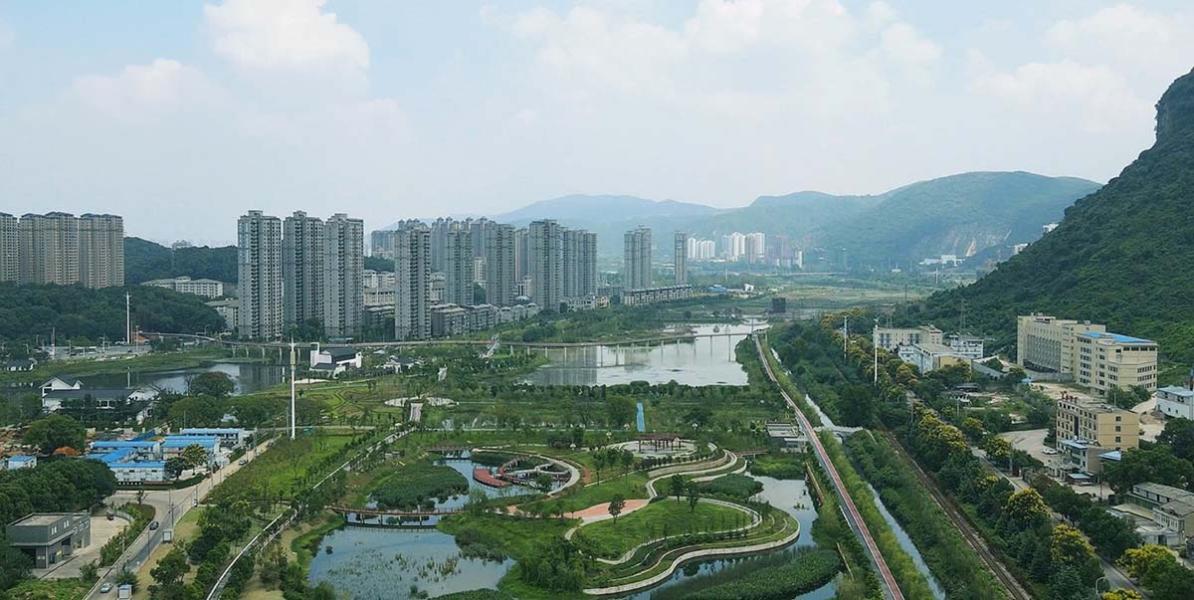

Huangshi in the PRC is a model of systematic pollution control and ecological rehabilitation of lakes in small and medium-sized cities.
Overview
A project supported by the Asian Development Bank (ADB) has converted Huangshi City in the People’s Republic of China (PRC) from an industrial city into an eco-friendly tourist destination through innovative solutions.
The project’s integrated approach, including wastewater collection and treatment, lake rehabilitation, engineered wetland construction, sludge treatment, solid waste collection and treatment, and capacity building, is a model of systematic pollution control and ecological rehabilitation of polluted urban lakes in small and medium-sized cities.
Moreover, the project piloted community-based solid waste sorting and a sponge city approach.
All of these contributed to the environmentally sustainable and socioeconomically inclusive development of Huangshi City.
Project information
44019-013 : Hubei Huangshi Urban Pollution Control and Environmental Management Project
Project snapshot
Context
Huangshi is 80 kilometers (km) southeast of Wuhan—the provincial capital of Hubei. The city is spread over a floodplain on the south bank of the Yangtze River. It has three lakes: Cihu, Qingshan, and Qinggang. It is one of the country’s garden cities.
Mining and its associated secondary industries have driven the city’s economic development. However, resource depletion and the need for more balanced and sustainable development prompted the municipal government to adopt an urban renewal strategy, which involves upgrading the city’s industries and developing new ones.
Challenge
Reliance on heavy industry and inadequate investments in urban infrastructure over the years brought environmental and urban development challenges in Huangshi. General neglect of pollution had allowed untreated industrial and domestic wastewater to flow into urban lakes. The city’s solid waste management system was inadequate, and the sludge from wastewater treatment plants was untreated.
Water quality in the three lakes was extremely low—at class V or worse.[1] This endangered the public health and safety of those living near the polluted inland waterways and in areas with deficient urban services.
Inadequate infrastructure investments constrained sustainable urban development and limited Huangshi’s ability to promote and support balanced regional development in Hubei province.
Solutions
The Hubei Huangshi Urban Pollution Control and Environmental Management Project upgraded the urban environmental infrastructure and services in the city through innovative and sustainable solutions, such as community-based solid waste sorting and a sponge city approach, which uses nature-based solutions to mitigate disaster risks and improve climate resilience.
Solid waste management. The executing agency recruited a consulting firm financed by the loan to implement a community-based solid waste sorting scheme that demonstrates the reduce–reuse–recycle approach. With the support of local government, the consulting firm set the classification category based on international and national experiences, purchased the classification rubbish bins, and conducted community trainings.
The project constructed 16 new and upgraded 3 existing solid waste collection and transfer stations; and purchased vehicles to collect, transport, and compact solid waste.
The pilot scheme for solid waste sorting and recycling with community participation was designed by the project at approval in 2012—5 years before the PRC initiated solid waste sorting. The State Council enacted the Action Plan of Municipal Solid Waste Sorting System in March 2017.
Lake rehabilitation and wetland construction. The project’s sponge city smart and sustainable approach increased the lakes’ water retention capacity with 2.46 million cubic meters (m3) through sludge dredging and wetland construction, and built water-permeable roads, green roofs, a sunken garden, ecological ditches, and ecological embankments on the banks of the lake. This was 3 years before the central government selected the first batch of sponge pilot cities.
The project removed 1.25 million (m3) of contaminated sediments from the three lakes, established 21.66 km of ecological embankments, and constructed 115.8 ha of engineered wetlands and a wetland education center. A total of 80,000 (m3) per day of treated wastewater discharged from the wastewater treatment plant was reused and further treated by the constructed wetland.
Wastewater collection and treatment system. The project constructed a wastewater treatment plant with a capacity of 30,000 (m3) per day; installed 79.2 km of sewers, including three associated pumping stations; and purchased a package of sewer maintenance equipment, vehicles, and monitoring devices. To enhance asset management, the project developed a smart system that integrated a geographic information system database and online monitoring system, which surveyed 812 km of the urban wastewater network.
Sludge treatment. Sludge treatment facilities were constructed with 179 tons per day capacity. The service life of the existing landfill facilities was prolonged since the treated sludge is reused as raw material by a cement plant.
Gender mainstreaming in capacity development. Out of 264 municipal government staff, 119 women were trained through 15 training workshops on mobilization, solid waste sorting guidance, regular sorting, outreach awareness, and distribution of publicity materials. Likewise, 3,720 women out of 8,080 participants joined 22 public awareness campaign activities on environmental protection and public health.
Results
Huangshi underwent transformational change from an industrial city to an eco-friendly tourist city. The average annual per capita income of urban households grew—mainly from tertiary industries, including tourism—by 9.5% annually from 2010 to 2021. The project benefits about 849,200 people, including 399,200 women.
The improvement of local environmental infrastructure has led to a better and cleaner Huangshi and reduced community exposures to untreated wastewater and solid waste, which affect public health and well-being. This led to an improved investment climate in the city, which attracted real estate projects along the rehabilitated Cihu, Qingshan, and Qinggang lakes and the newly constructed wetland.
Wastewater collection coverage increased to 100% from 71%, while collection rate increased to 98% from 44%. Sewage sludge treatment rate increased to 100% from 0% and solid waste collection rate increased to 100% from 79%.
Water quality in the three lakes improved to class IV and to class III in some sections of Cihu lake. In October 2022, swans flied to Cihu lake for the first time after more than 10 years.
The residents happily returned to their homes along the constructed wetland as living conditions improved after project implementation.
Lessons
The urban environment can be improved through a smart, sustainable, and integrated approach. A smart and systematic design for pollutants interception, pollutants treatment, and facilities operation and maintenance need to be considered simultaneously. The Huangshi project demonstrated this approach and has helped the city transition to environmentally sustainable and socioeconomically inclusive development.
It is also important to ensure the financial sustainability of the operation and maintenance of the environmental infrastructure after construction. In Huangshi, the operation of wastewater treatment, sludge treatment, and solid waste collection and treatment is supported by a cost-based tariff. The facilities operator may apply for tariff adjustment with the local government when it could no longer cover the operational cost. Then, the government consults the public and conducts a public hearing before it decides on the proposed tariff adjustment.
For the proper maintenance of the ecological embankment and engineered wetland, the operation unit applies for funding under the municipal budget each year. The unit is now exploring ways to generate revenue to lighten the municipal government’s burden.
[1] Water quality standards of the People’s Republic of China have five classes that cover 24 basic quality parameters. Class I is pristine; class II is for high-value fish production areas and spawning habitats; class III is suitable for urban water supply; class IV is suitable for irrigation and recreation; and class V is polluted and not recommended for human consumption or agricultural use.
Asian Development Bank (ADB). 2022. Hubei Huangshi Urban Pollution Control and Environmental Management Project: Completion Report. Manila.
ADB. 2015. Reviving Lakes and Wetlands in the People’s Republic of China Volume 2:Lessons Learned on Integrated Water Pollution Control from Chao Lake Basin. Manila.

Senior Project Officer, East Asia Department, ADB
This blog is reproduced from Development Asia.
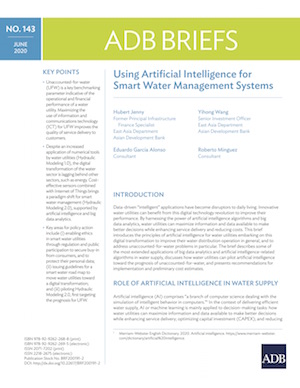
© 2025 Regional Knowledge Sharing Initiative. The views expressed on this website are those of the authors and presenters and do not necessarily reflect the views and policies of the Asian Development Bank (ADB), its Board of Governors, or the governments they represent. ADB does not guarantee the accuracy of the data in any documents and materials posted on this website and accepts no responsibility for any consequence of their use. By making any designation of or reference to a particular territory or geographic area, or by using the term “country” in any documents posted on this website, ADB does not intend to make any judgments as to the legal or other status of any territory or area.
